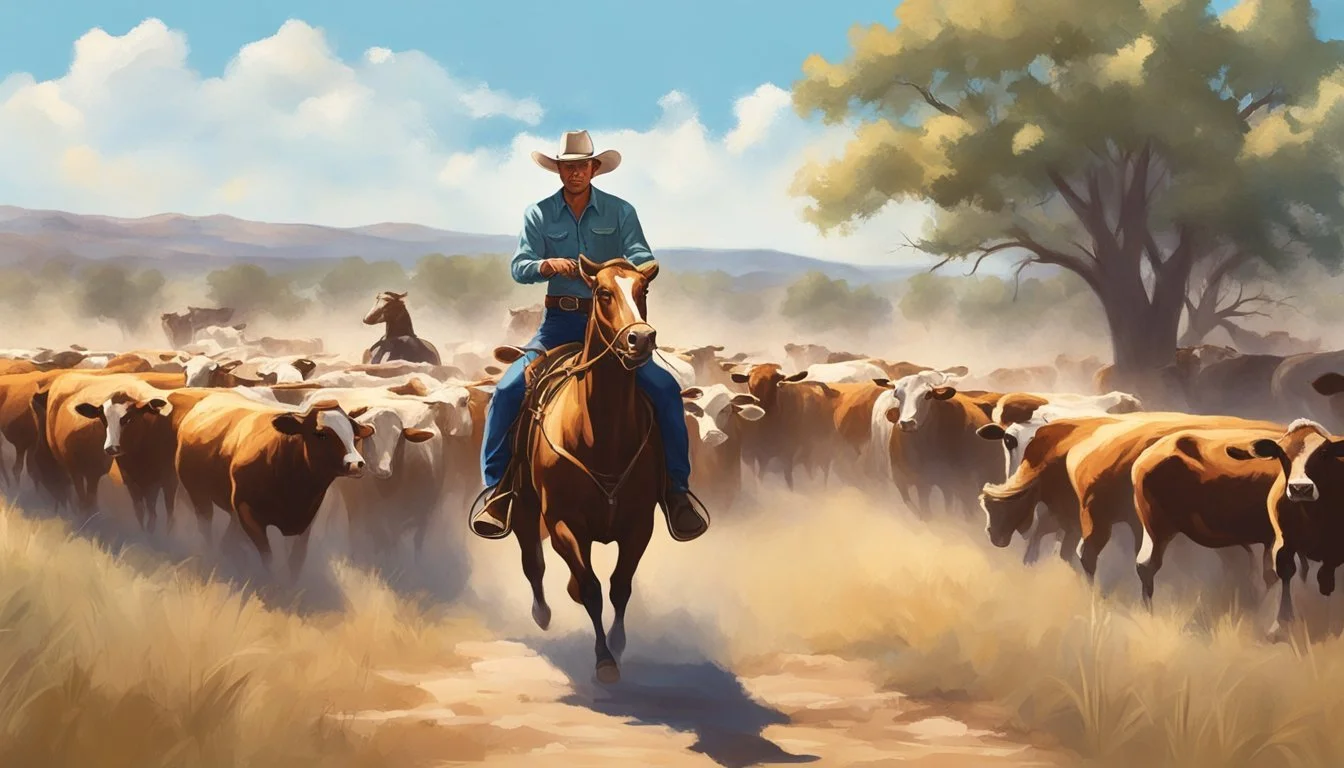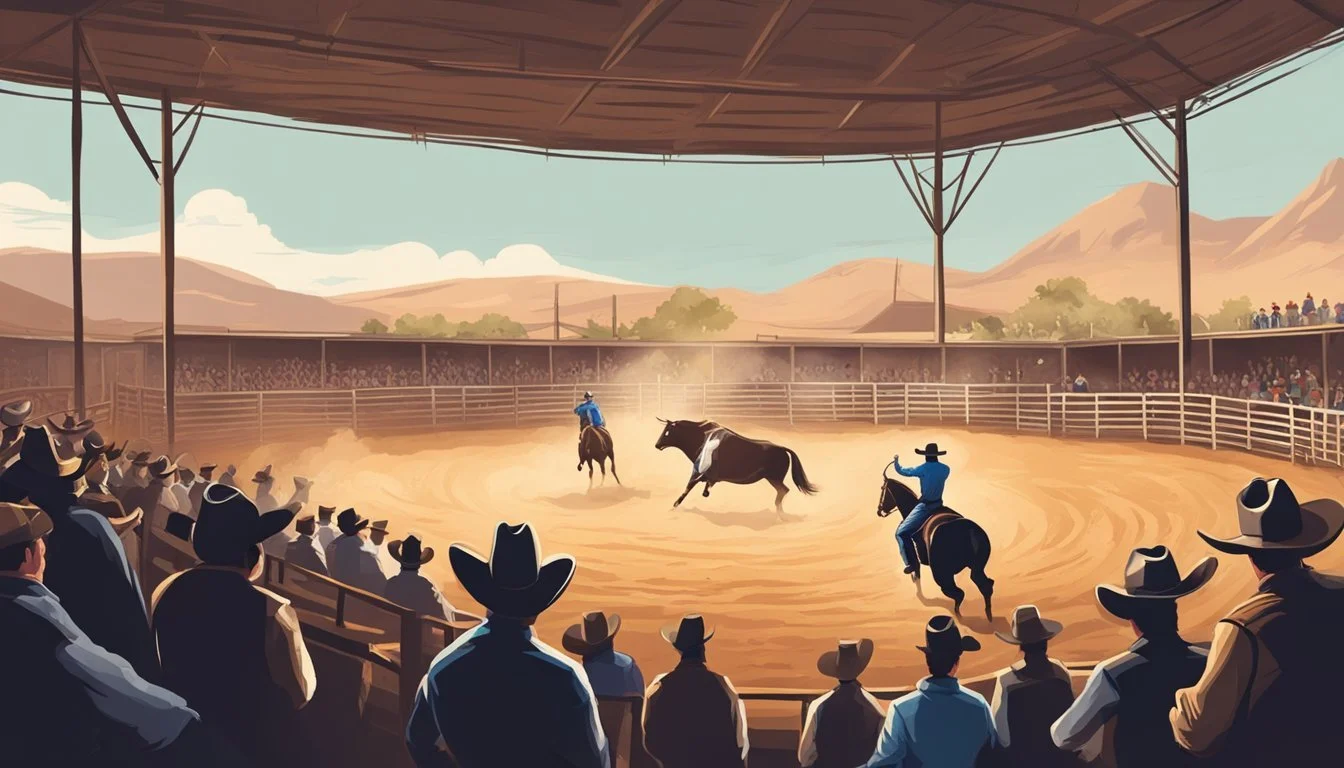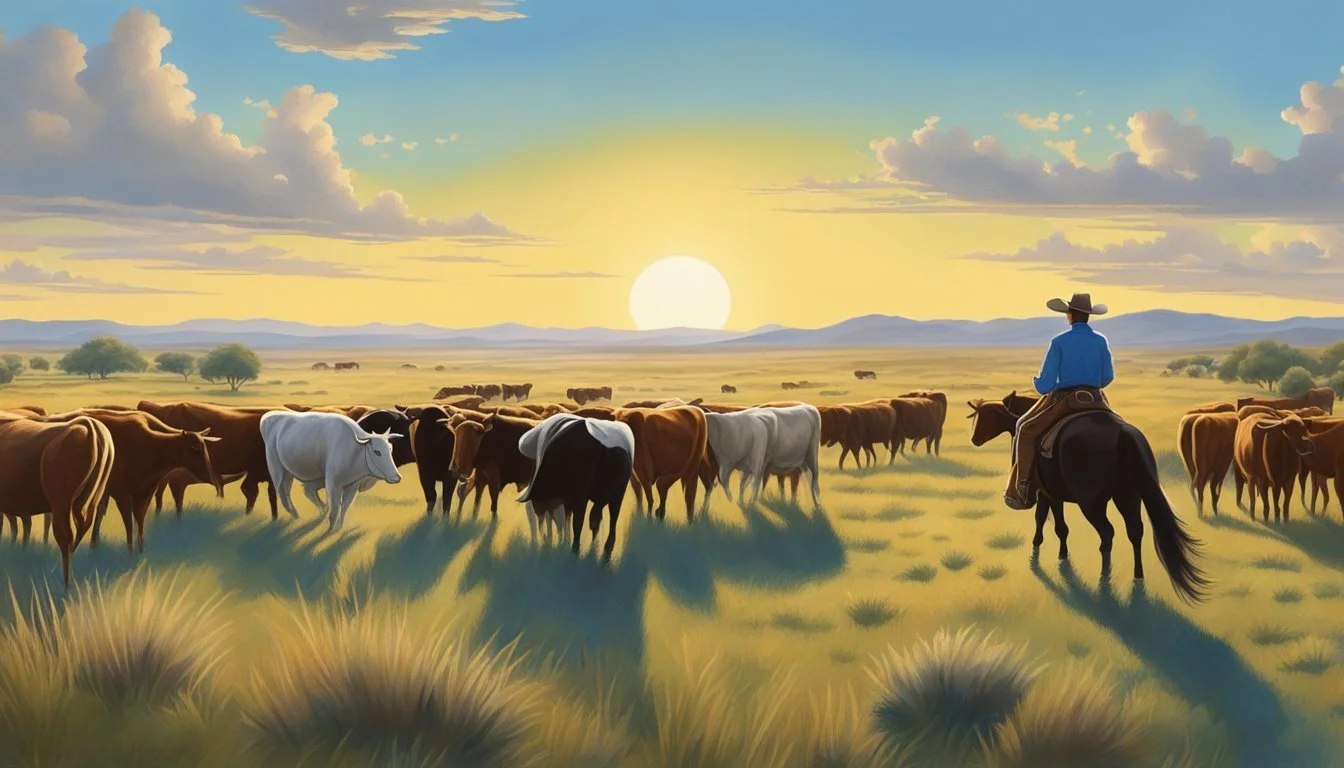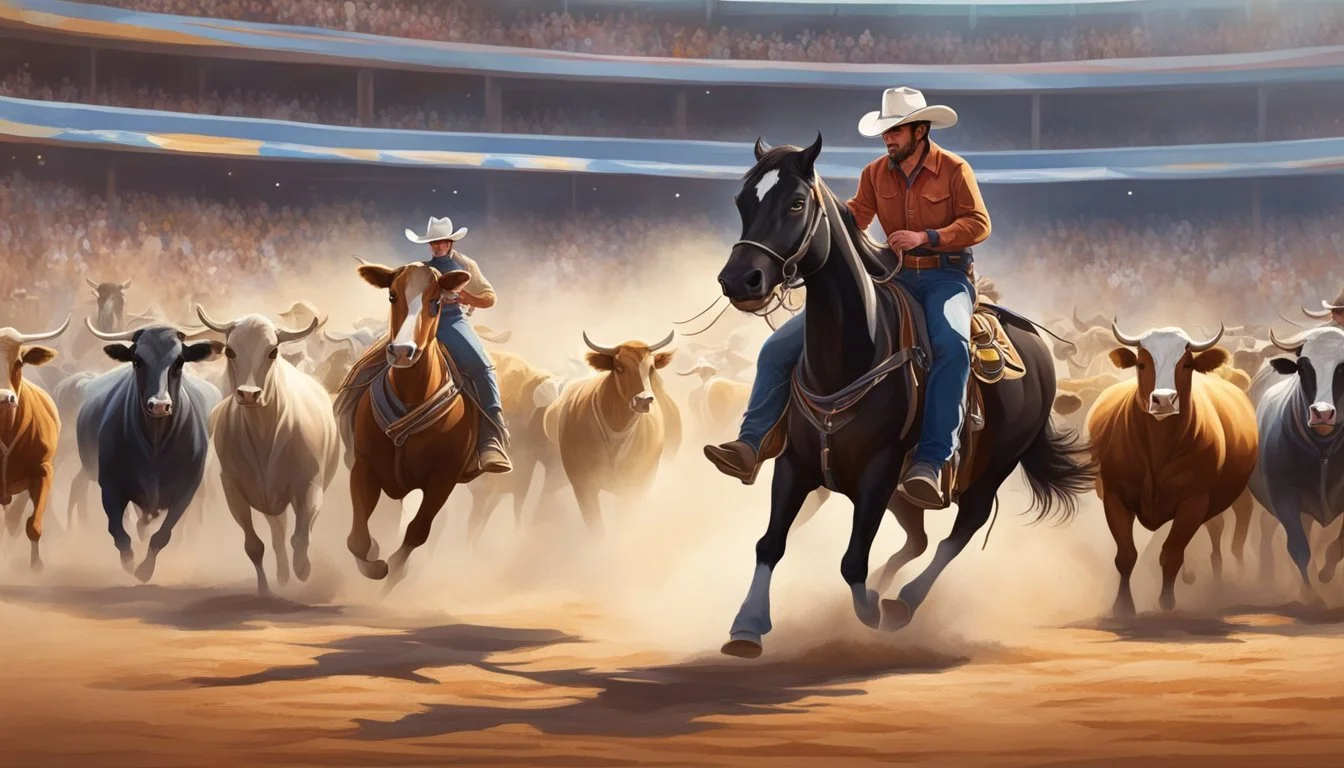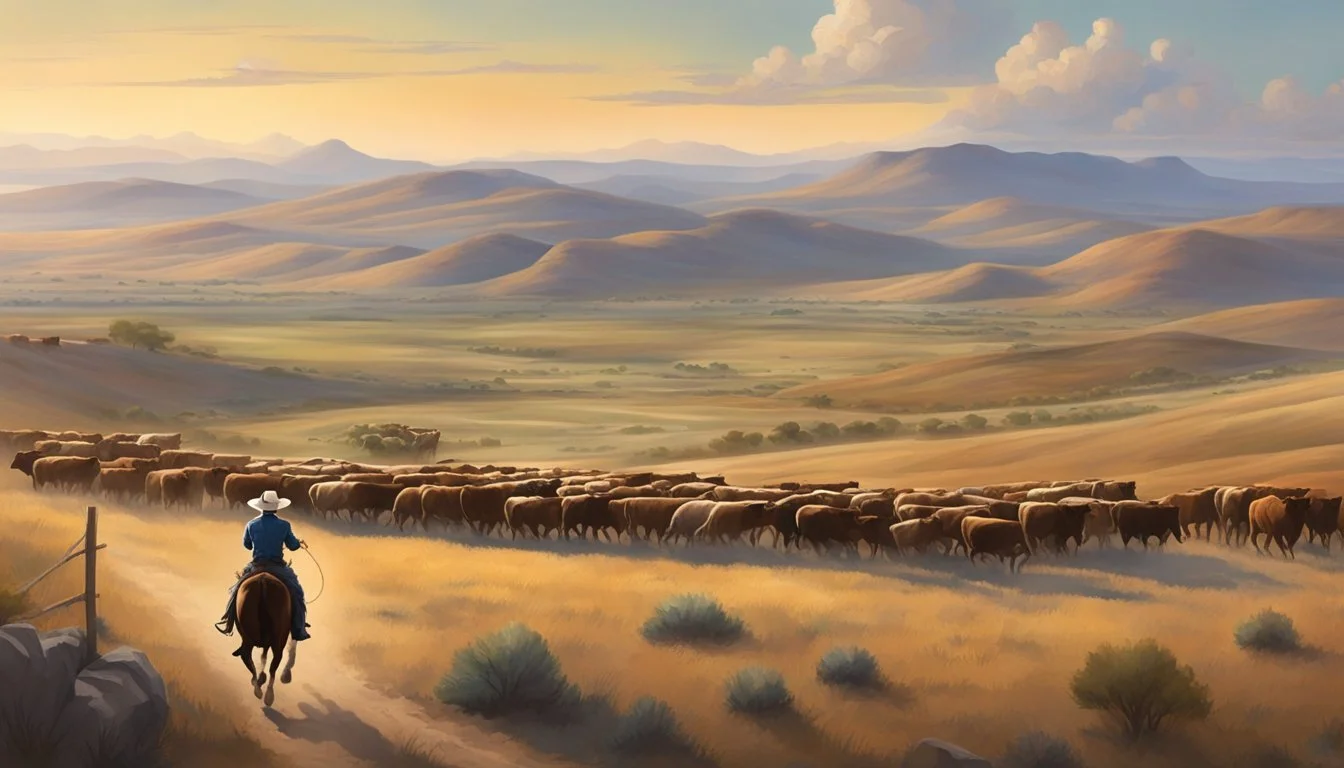The Texas Cowboy's Guide to Raising Livestock and Rodeo Skills
Mastering the Ranch Life
The Texas cowboy is emblematic of a rich cultural heritage that has come to define the American West. With roots tracing back to the Spanish vaqueros, cowboys in Texas have honed their skills in herding and horsemanship over centuries. These skills have evolved into the art of rodeo, a competitive sport that showcases the abilities and traditions of the cowboy lifestyle. At the heart of cowboy culture lies a deep connection with raising livestock—a skill that demands a comprehensive understanding of animal behavior, nutrition, and breeding.
Rodeo skills, on the other hand, extend the cowboy's expertise into the arena, where they perform in events such as bull riding, barrel racing, and steer wrestling. The Fort Worth Stock Show and Rodeo, an event with origins dating back to 1896, epitomizes the celebration of cowboy culture, attracting visitors from around the world. Through events like these, the traditional techniques of livestock management are displayed alongside the athletic prowess required in rodeo sports.
Understanding the Texas cowboy's approach to raising livestock involves recognizing the delicate balance between practical ranch work and the competitive rodeo circuit. Both realms require a confident and knowledgeable approach to handling animals and a clear, strategic mindset for managing the needs of a working ranch. The convergence of these skills forms the backbone of the enduring legacy of the American cowboy in Texas.
History of the Texas Cowboy
The Texas cowboy emerged as an iconic figure from the intermingling traditions of Native Americans, Mexican vaqueros, and European settlers. This history is marked by skills and practices that shaped the American West and cemented the cowboy's role in American culture.
Evolution of Cowboy Traditions
The cowboy lifestyle began in the vast landscapes of Texas, where handling cattle became not just a necessity but a way of life. Early Texan cowboys were known for their adeptness in various roles on the ranch. From herding cattle to maintaining the ranch infrastructure, these individuals were jacks-of-all-trades. Their daily duties would range from mending fences to participating in cattle drives that could last for months.
Influence of Spanish Vaqueros
The foundation of the Texas cowboy can be attributed to the Mexican vaqueros, who were expert horsemen and cattle herders. From these skilled laborers, Texans learned roping, riding, and driving cattle—skills quintessential to their role. The vaqueros were part of Texas’s heritage when it was still a part of Mexico in the 1700s, before becoming a hallmark of cowboy culture.
The American West and Cattle Drives
Two of the main arteries for cattle drives to flow through the American West were the Chisholm Trail and the Goodnight-Loving Trail. These drives were a major economic activity, and cowboys played an essential role in moving cattle from Texas to railheads in Kansas or grazing grounds in the north. They traversed the open range, a task that required deep knowledge of the land and resilience in the face of the harsh conditions of the American West.
Role of Cowboys in American Culture
Cowboys became symbolic representations of freedom, bravery, and adventure in the American West. Figures like Richard King of the renowned King Ranch influenced the narrative of the cowboy with their extraordinary cattle drives and ranch management. The workers of King Ranch, known as Kineños, inherited both the cowboy and Mexican vaquero techniques, shaping a unique cultural identity that still resonates within the cowboy tradition. This narrative has been immortalized in various forms of American culture, from film and literature to rodeo events celebrating cowboy skills and heritage.
Fundamentals of Livestock Management
Expertise in livestock management is pivotal for maintaining a productive ranching operation. From breeding to herding, each practice is vital for the success of Texas cattle operations.
Breeding and Rearing Cattle
In Texas, breeding cattle, particularly Texas Longhorns, has historical and cultural significance. Decisions on breeding stock directly influence the quality of the future herd. A focus on genetics ensures strong cattle capable of thriving in the demanding Texan environment. For rearing, calves often receive ear tags and vaccinations shortly after birth to safeguard their health and for easy identification.
Health and Veterinary Care
Consistent veterinary care is crucial for a thriving cattle herd. This includes regular vaccinations, parasite control treatments, and prompt disease management. Ranches must establish a relationship with a trusted veterinarian and adhere to a comprehensive healthcare schedule to prevent outbreaks that can decimate herds.
Nutrition and Feeding
Cattle require a balanced diet to maintain health and increase productivity. Quality pasture management is quintessential, involving soil assessment and water availability checks to ensure cattle have access to nutrient-rich forage. In dryer seasons, ranchers supplement with hay or grain to meet the cattle's dietary needs.
Branding and Herding Techniques
Branding has long been a method of establishing ownership in the cattle industry. While still practiced, the method has modernized to include less invasive options like ear tagging. Effective herding techniques are taught through generations, with modern cowboys still using time-honored practices such as those derived from early vaquero methods. These techniques ensure the safe and efficient movement of cattle across the ranch.
Rodeo Skills and Competitions
Rodeo events showcase a range of competitive sports that demand both physical skill and mental discipline. They are a testament to the cowboy's dexterity and the deep-rooted traditions of the American West.
Common Rodeo Events
Rodeos encompass a variety of events, each requiring distinct skill sets. Rough stock events include bull riding, saddle bronc riding, and bronc riding, where cowboys aim to stay mounted on a bucking animal for a specified duration. Timed events, such as barrel racing, steer wrestling, tie-down roping, and team roping, test speed and precision. Newer to the rodeo scene is breakaway roping, a timed event emphasizing quick lasso skills.
Training for Rodeo Sports
Training for rodeo sports involves a rigorous regimen to improve rider fitness and technique. Cowboys and cowgirls often start with foundational skills, like horseback riding proficiency and lariat handling, before specializing in events like bull riding or barrel racing. Success in competition merges athletic strength with rodeo-specific skills honed through practice and experience.
Understanding Rodeo as a Competitive Sport
Rodeo is recognized as a competitive sport with a structure of local, regional, and national events culminating in championship titles. Each event has a scoring system—judges rate rough stock events based on rider performance and animal athleticism, while timed events rely on the speed of completion. Athletes often travel the circuit, competing for ranking points and purses.
Safety and Animal Welfare
Rodeos are bound by regulations ensuring the well-being of both human and animal participants. Safety gear, like helmets and protective vests, is standard for competitors in events such as bull riding. Meanwhile, livestock care is paramount; regulations are in place to monitor the health, transportation, and handling of animals involved in rodeo events.
Rodeo and Cowboy Attire
In the world of rodeo, attire isn't just about fashion—it's a functional necessity that can affect a cowboy's performance. Proper gear, from boots to hats, is designed for safety, comfort, and style.
Importance of Proper Gear
The right gear is essential for safety and effectiveness in the rodeo. Cowboy boots with a durable build protect the feet, while cowboy hats shield from the sun and add an element of tradition. Leather garments provide a balance of flexibility and protection, making them ideal for the rough rodeo environment.
Types of Cowboy Boots
Traditional Western: High shaft, angled heel for stirrup stability.
Roper: Shorter shaft, lower heel for agility on the ground.
Buckaroo: Tall and decorative, suitable for riders showing off skills.
When shopping for boots, consider the materials and construction. Quality leather boots may cost more but offer durability and comfort.
Choosing the Right Cowboy Hat
Cowboy hats come in various styles, the most common being the Cattleman's and Buckaroo:
Cattleman's: Center crease with side indentations, suitable for most.
Buckaroo: Simpler design, often preferred for its straightforward style.
Hats should fit snugly and provide adequate shade. Leather sweatbands on the inside ensure comfort and durability.
Clothing for Rodeo Events
Attire includes:
Denim jeans: Offers protection and flexibility.
Long-sleeved shirts: Preferably snap-button for easy movement.
Chaps: Leather leg coverings to shield from livestock and equipment.
Each piece is selected for its ability to withstand the rigorous activities of rodeo events while reflecting the cowboy's personal style.
Cowboy Lifestyle and Traditions
The Texas cowboy tradition incorporates a unique blend of daily responsibilities, social gatherings, cultural arts, and distinctive culinary practices rooted in a rich history that continues to thrive in modern Texas.
Daily Life on a Ranch
On Texas ranches, cowboys and cowgirls typically start their day before sunrise. They tend to various tasks such as feeding livestock, repairing fences, and monitoring the health and welfare of animals. Herding cattle, often on horseback, remains a fundamental skill. Routine maintenance of ranch equipment and horsemanship also form critical aspects of their daily responsibilities.
Morning: Feed animals, check water sources
Day: Cattle herding, fence mending, equipment upkeep
Evening: Prepare for the next day, rest
Social Events and Gatherings
Social life for cowboys is rich with events that strengthen community bonds. Rodeos, a competitive sport that evolved from cattle herding practices, are central to these gatherings. Festivals and concerts often accompany rodeos, showcasing cowboy culture. Additionally, smaller community events like barn dances provide casual settings for camaraderie among ranchers.
Local Events: Barn dances, small concerts
Large Events: Rodeos, cowboy festivals, Cowtown gatherings
Cultural Significance of Cowboy Music and Poetry
Cowboy music and poetry are integral to expressing the hardships and joys of ranch life. These art forms capture the spirit of the cowboy, often depicting tales of life on the trail. Poems and songs are passed down through generations, preserving the oral history of the cowboy experience.
Music: Traditional ballads, modern country tunes
Poetry: Recitations at gatherings, competitions
Cowboy Cuisine and Chuckwagon Cooking
Cowboy cuisine is a direct reflection of the practical and hearty needs of a hard day’s work. Cowboys often enjoyed meals of beans, beef, and easy-to-preserve foods cooked over an open flame. The chuckwagon was the mobile kitchen that accompanied them on cattle drives, offering a place to gather and refuel.
Staples: Beans, beef, biscuits, coffee
Cooking Style: Open fire, cast iron cookware
Modern Cowboy and Rodeo Festivals
In Texas, modern cowboys continue to shape the tradition of livestock management while rodeo festivals celebrate this heritage and impact local economies significantly. Each year, these events attract millions of visitors, establishing Texas as a hub for cowboy culture and rodeo sports.
Major Rodeo Festivals in Texas
Texas boasts some of the largest and most famous rodeos in the world. Key annual events include:
Houston Livestock Show and Rodeo
Fort Worth Stock Show & Rodeo
San Antonio Stock Show & Rodeo
These festivals provide an immersive experience into cowboy culture with live music, agricultural exhibits, and thrilling rodeo competitions.
Houston Livestock Show and Rodeo
The Houston Livestock Show and Rodeo stands as the world's largest livestock show, drawing over two million visitors annually. Scheduled from February 27 - March 17, 2024, it features a 20-day program packed with:
Rodeo competitions
Carnivals
Concerts
Food vendors
Role of Rodeo in Local Economies
Rodeos are more than just cultural events; they are vital to the local economies. For example, the San Antonio Stock Show & Rodeo attracts around 1.5 million visitors, which significantly benefits businesses in the area.
Tourism and Rodeo Attractions
Tourism spins directly from these rodeo festivals. Attractions such as the Fort Worth Stockyards showcase the blend of historical significance with modern rodeo skills, enhancing the visitor experience and preserving cowboy culture for future generations.
Conservation and the Future of Cowboys
The modern Texas cowboy plays a critical role in balancing traditional ranching with contemporary sustainability and conservation efforts, emphasizing animal welfare and environmental awareness while adapting to the changing landscape of rodeo sports.
Environmental Challenges and Ranch Conservation
Texas ranchers face increasing environmental challenges, notably soil degradation, water scarcity, and habitat loss. They adopt conservation practices like rotational grazing and use of native plant species to mitigate these issues. These methods help maintain the ecosystem's balance and ensure the land's productivity for future generations.
Cattle Welfare and Sustainable Practices
Animal welfare is a core component of sustainable ranching. Texas cowboys prioritize the health and well-being of their cattle by implementing practices such as low-stress handling techniques and providing adequate resources like clean water and nutritionally balanced feed, leading to better livestock management and reduced environmental impact.
Advocacy and Education in Cowboy Communities
Cowboys take active roles in advocacy and community education, sharing knowledge of sustainable methods and the importance of preserving cowboy culture. They engage in programs that focus on responsible land stewardship, informing fellow ranchers and the public on the benefits of sustainable ranch management.
The Future of Rodeo Sports
Rodeo sports are evolving with enhanced focus on animal care and rider safety measures. Innovations in equipment and rules demonstrate a commitment to ensuring that rodeo remains a culturally significant, yet humane and environmentally conscious, activity. This approach safeguards the sport's future and upholds the legacy of Texas cowboys.
Rodeo and Livestock Terminology
Understanding the specific terminology used in rodeo and livestock management is essential for anyone involved in these areas. This vocabulary not only aids in communication but also enriches the cultural heritage of the cowboy lifestyle.
Basic Rodeo Lingo and Vocabulary
Chute: The starting gate for animals in events such as bull riding. Penalty: Time added to a competitor's score for infractions like breaking the barrier early. Tie-down Roping: Also known as calf roping, where a calf is caught and tied by a cowboy.
Roping: Refers to the act of throwing a lasso to catch livestock in several rodeo events.
Barrier: A rope across the open end of the chute that ensures a fair start for the animal.
Understanding Livestock and Ranching Terms
Livestock: Domesticated animals raised on a ranch, including cattle and horses. Ranching: The business of raising livestock for meat, dairy, or sport.
Herd: A group of a single species of animal, such as cattle, that lives and moves together.
Common Cowboy Slang and Expressions
"Ride high": To feel confident or successful, analogous to a good ride in rodeo.
Carnival atmosphere: The festive environment that often accompanies rodeo events, complete with games and amusement rides.
"All hat and no cattle": Describing someone who talks big but cannot back it up, a poseur.
Each term encapsulates a unique aspect of the rich traditions and demanding physical tasks inherent in cowboy culture and rodeo sports.
Preserving Cowboy Heritage
Preserving the rich cowboy heritage is pivotal to maintaining the cultural identity and history of the American West. This covers a spectrum from the traditional practices and skills in raising livestock and participating in rodeo, to the broader influence that cowboy culture has had on American society and media.
The Role of Museums and Historical Sites
Museums and historical sites play a significant role in chronicling the cowboy's evolution, from the early vaqueros of Spanish origin to the structure of modern rodeo. Institutions such as the Black Cowboy Museum in Rosenberg, Texas, provide insight into the diverse origins of cowboy culture, emphasizing the contributions of African American cowboys. Key historical sites include:
Fort Bend County: Recognized as a significant location for the early cowboy origins.
Rodeo Heritage Museum: Highlights the western way of life during the peak rodeo years, particularly from the 1930s to the 1950s.
Texas' Historical Cattle Trails: These trails marked the routes of cowboy-led cattle drives essential to the state's economy and lore.
Education on the Cowboy Way of Life
Educational programs aim to impart knowledge on the pragmatic aspects of cowboys' lives, like livestock management and rodeo participation. Moreover, they shed light on the intangible cultural elements including:
The use of barbed wire: Its impact on ranching methods.
Native American influence: Contributions to cowboy culture and rodeo skills.
Influence of Cowboys in Popular Media
The cowboy image has been romanticized in American media, often symbolizing rugged individualism and bravery. Cowboys and the frontier spirit have inspired a genre of Western films, literature, and even fashion, which has:
Shaped national identity: Cowboys have become emblematic of American culture on a global stage.
Portrayed myth vs. reality: Media depicts a balance between the dramatized mythos and the reality of cowboy life.
Cowboy Organizations and Societies
Various organizations and societies dedicated to cowboy culture exist to preserve and promote the heritage, such as:
The Prairie View Trail Riders Association: Honors the traditions of trail riding and Black heritage.
Local Rodeo Associations: In states like Wyoming and South Dakota, these support the cowboy way of life through events and educational outreach.

